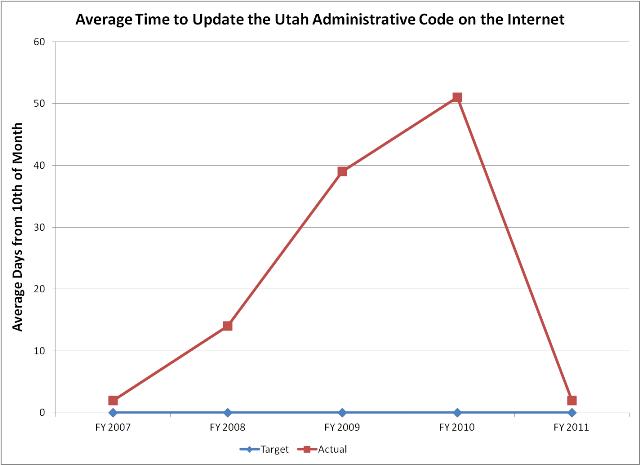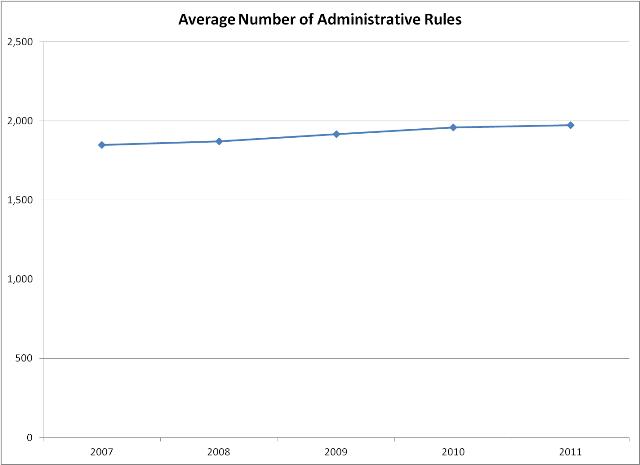Compendium of Budget Information for the 2012 General Session
| Infrastructure & General Government Appropriations Subcommittee | |||||||||||||||||||||||||||||||||||||||||||||||||||||||||||||||||||||||||||||||||||||||||||||||||||||||||||||||||||||||||||
| Subcommittee Table of Contents | |||||||||||||||||||||||||||||||||||||||||||||||||||||||||||||||||||||||||||||||||||||||||||||||||||||||||||||||||||||||||||
Agency: Administrative Services Line Item: Administrative Rules Function The Division of Administrative Rules establishes procedures for administrative rulemaking, records administrative rules, and makes administrative rules available to the public. It further administers the Utah Administrative Rulemaking Act and ensures state agencies comply with filing, publication, and hearing procedures. To accomplish these mandates the division provides training to agency rule writers and administrators, performs individual consultations, publishes a periodic newsletter, and distributes the Rulewriting Manual for Utah. The division also provides regular notices to agencies of rules due for five-year review, rules about to expire, and rules about to lapse. Administrative rules have the effect of law meaning that an administrative rule can be enforced by the courts and that a citizen or business that violates a rule may be subject to the loss of a license, civil penalties, or the like. In 1998, the division enacted amendments to Section R15-4-10, outlining the detail necessary in answering the budget-related questions required by law. Further, UCA 63G-3-501 creates a legislative Administrative Rules Review Committee to exercise continuous oversight of the rule-making process. Statutory Authority The Utah Administrative Rulemaking Act, UCA 63G-3, outlines the rulemaking process:
The Utah State Bulletin acts as state government's main means of notifying the public of rules being proposed by state agencies as well as the basic tool for soliciting public comment. The Bulletin, issued electronically on the first and fifteenth of each month, is Utah's version of the Federal Register. In addition to proposed rules, the Bulletin includes emergency rules, notices of five-year reviews, effective notices, other public notices from state agencies, indexes of effective rules, and executive orders. The Utah Administrative Code provides a unified source for effective rules with which state government, local entities and citizens are required to comply. The Code is Utah's version of the Code of Federal Regulations. The Code is available electronically over the Internet. Print and CD-ROM versions are available from private source vendors. Performance Timely availability of the Utah Administrative Code (UAC) plays a critical role in how Utah's regulatory system works. Public access to administrative rules increases the likelihood of compliance. Public access also provides citizens with an understanding of government's expectations and requirements. The division works to have the UAC available on the web by the tenth of the month. Anything after the tenth of the month is considered late. The impact of the division's automation efforts can be seen in this chart.  In FY 2011 the division maintained an average of 1,974 effective rules. Cumulative growth in the number of effective rules since FY 2002 has grown 15 percent.  Funding Detail UCA 63G-3-402(5) gives this budget nonlapsing authority.
|